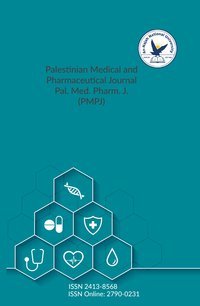Head-to-head comparison between magnetic resonance imaging and arthroscopy findings for ligamentous and meniscal knee injuries: a cross-sectional observational study in Palestine
Authors:
Article info
2022-12-04
2023-02-23
2024-03-01
25 - 32
Keywords
- injury;
- Meniscus;
- Anterior
- Mri;
- Arthroscopy;
- Liga-ment
- Knee;
- Cruciate
- Medial
- Lateral
Abstract
Background: Traumatic knee injuries are widespread, especially among young adults; when a clinical exam suspects the diagnosis, it is evaluated by magnetic resonance imaging (MRI) and confirmed by arthroscopy. MRI is non-invasive and saves patients from potential general anesthesia and surgical site infection complications. We aim to assess the precision of ligamentous and meniscal injuries by MRI compared to the gold standard knee arthroscopy. Methods: We performed a cross-sectional observational study at An-Najah University Hospi-tal (NNUH). Patients who underwent knee arthroscopic surgery and had preoperative MRIs were included in this study. The magnetic resonance and intraoperative findings during ar-throscopy were recovered from patients' records and compared for sensitivity and specificity. Results: 107 patients were included in our research. Their MRI and arthroscopy findings were compared using a cross-tabulation test. MRI sensitivity to detect anterior cruciate liga-ment and medial meniscal tears was 57.1% and 86%, respectively. However, the specificity of the lateral meniscal tear was 89.6%. Furthermore, concerning the type of tear, the sensitivi-ty of MRI to diagnose a full-thickness tear was 66.7%. For the specificity of partial tears, it was measured as 94.2%. Conclusion: For assessing ligamentous knee tears, MRI may be a reliable, accurate, and less invasive option. It can be reliably employed as the first-line inves-tigation; however, the gold standard investigation is arthroscopy. MRI is less invasive, has a major adjuvant rule that helps the surgeon avoid lengthy knee exploration of the knee during arthroscopy by focusing on preoperative MRI findings, and could be considered standard routine imaging for a patient scheduled for arthroscopy.
Head-to-head comparison between magnetic resonance imaging and arthroscopy findings for ligamentous and meniscal knee injuries: a cross-sectional observational study in Palestine
المؤلفون:
معلومات المقال
2022-12-04
2023-02-23
2024-03-01
25 - 32
الكلمات الإفتتاحية
- injury;
- Meniscus;
- Anterior
- Mri;
- Arthroscopy;
- Liga-ment
- Knee;
- Cruciate
- Medial
- Lateral
الملخص
Background: Traumatic knee injuries are widespread, especially among young adults; when a clinical exam suspects the diagnosis, it is evaluated by magnetic resonance imaging (MRI) and confirmed by arthroscopy. MRI is non-invasive and saves patients from potential general anesthesia and surgical site infection complications. We aim to assess the precision of ligamentous and meniscal injuries by MRI compared to the gold standard knee arthroscopy. Methods: We performed a cross-sectional observational study at An-Najah University Hospi-tal (NNUH). Patients who underwent knee arthroscopic surgery and had preoperative MRIs were included in this study. The magnetic resonance and intraoperative findings during ar-throscopy were recovered from patients' records and compared for sensitivity and specificity. Results: 107 patients were included in our research. Their MRI and arthroscopy findings were compared using a cross-tabulation test. MRI sensitivity to detect anterior cruciate liga-ment and medial meniscal tears was 57.1% and 86%, respectively. However, the specificity of the lateral meniscal tear was 89.6%. Furthermore, concerning the type of tear, the sensitivi-ty of MRI to diagnose a full-thickness tear was 66.7%. For the specificity of partial tears, it was measured as 94.2%. Conclusion: For assessing ligamentous knee tears, MRI may be a reliable, accurate, and less invasive option. It can be reliably employed as the first-line inves-tigation; however, the gold standard investigation is arthroscopy. MRI is less invasive, has a major adjuvant rule that helps the surgeon avoid lengthy knee exploration of the knee during arthroscopy by focusing on preoperative MRI findings, and could be considered standard routine imaging for a patient scheduled for arthroscopy.
An-Najah National University
Nablus, Palestine
Nablus, Palestine
- P.O. Box
- 7, 707
- Fax
- (970)(9)2345982
- Tel.
- (970)(9)2345560
- (970)(9)2345113/5/6/7-Ext. 2628
- [email protected]
- EIC
- Prof. Ismail Warad
